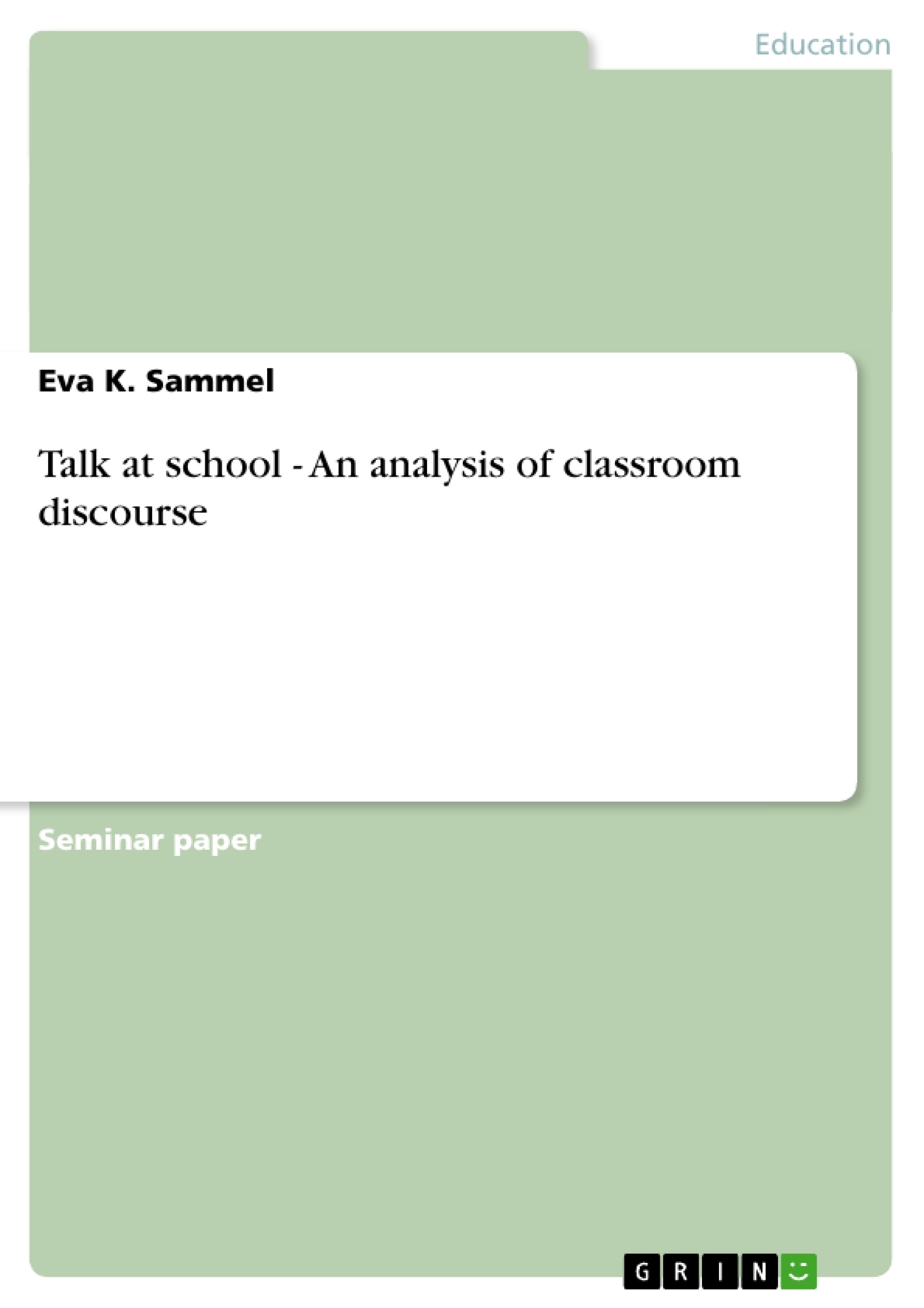This paper, like any other conversation analysis, is “an approach to the analysis of spoken discourse that looks at the way in which people manage their everyday conversational interactions” (Paltridge 2006:107). The kind of spoken discourse to be analysed here is classroom discourse. There are many different “aspects of spoken discourse” (2006:107) that help to analyse a conversation such as sequences, turn taking, code-switching, feedback, repair, openings and closings, to name just a few. This paper will take a closer look at some of these aspects and in particular at opening sequences and repair. But I will first of all give a short introduction on the structure of lessons as a basis for the following chapters.
Inhaltsverzeichnis
- Introduction.
- Talk at school
- Lesson structure.
- Opening sequences.
- Repair.
- Conclusion.
- References.
- Appendix.
- Transcription Bili 7b2 01.07.05.
- Transcription Bili 7a 17.06.05.
Zielsetzung und Themenschwerpunkte
This paper aims to analyze classroom discourse by examining several conversational strategies commonly found in this context. The paper focuses on the structure of lessons, opening sequences, and repair mechanisms within classroom interactions.
- The structure of lessons as a foundation for classroom discourse.
- Opening sequences and their role in initiating classroom interactions.
- Repair strategies used to address misunderstandings or errors in classroom communication.
- The importance of communication in achieving the objectives of education.
- The analysis of classroom discourse as a means of understanding social interactions in educational settings.
Zusammenfassung der Kapitel
The introduction provides a brief overview of the importance of studying classroom discourse as a form of basic research. It sets the stage for the subsequent chapters by outlining the key conversational strategies that will be examined.
The chapter on "Talk at school" introduces the concept of classroom discourse as a specific type of spoken interaction. It highlights the significance of various aspects of spoken discourse, including sequences, turn-taking, code-switching, feedback, repair, openings, and closings. The chapter then focuses on the structure of lessons, providing a theoretical framework for understanding the organization of classroom interactions.
The chapter on "Lesson structure" delves into the communication system of schools, emphasizing the role of communication in achieving educational goals. It explores the importance of teacher-student and student-student communication as the foundation for classroom interaction.
- Quote paper
- Eva K. Sammel (Author), 2009, Talk at school - An analysis of classroom discourse, Munich, GRIN Verlag, https://www.grin.com/document/132238
-

-

-

-
Upload your own papers! Earn money and win an iPhone X. -

-
Upload your own papers! Earn money and win an iPhone X. -

-
Upload your own papers! Earn money and win an iPhone X. -

-
Upload your own papers! Earn money and win an iPhone X. -

-
Upload your own papers! Earn money and win an iPhone X. -

-
Upload your own papers! Earn money and win an iPhone X. -

-
Upload your own papers! Earn money and win an iPhone X. -

-
Upload your own papers! Earn money and win an iPhone X. -

-
Upload your own papers! Earn money and win an iPhone X.

